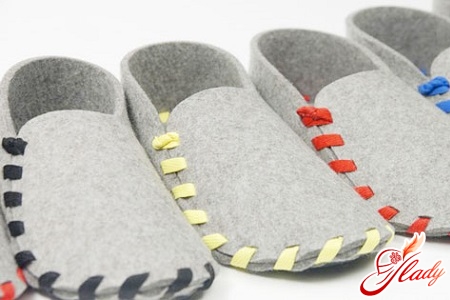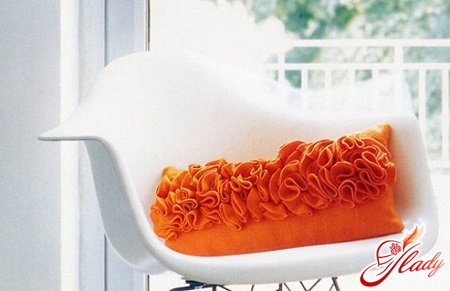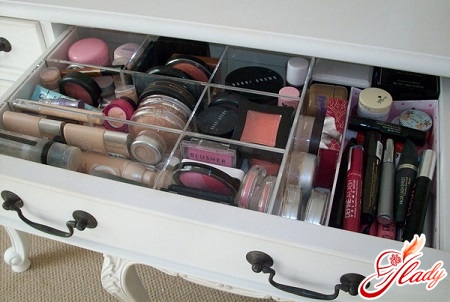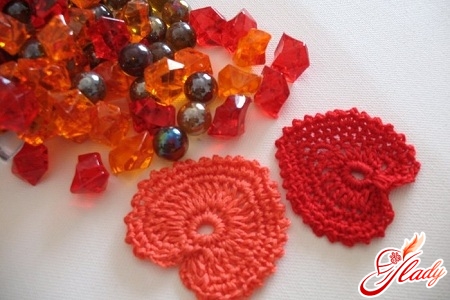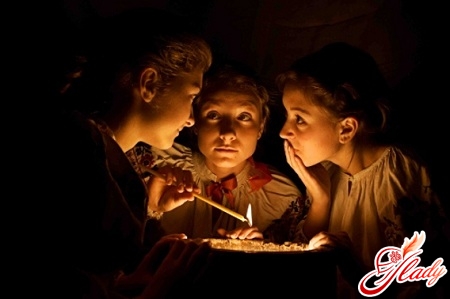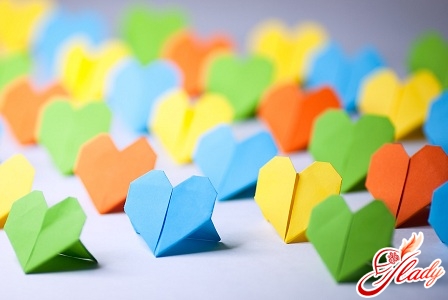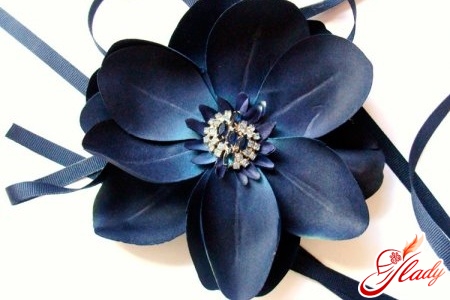 Natural flowers are wonderful. A delicate fragrance envelops the entire room. Beautiful buds decorate the interior. But natural colors have a significant disadvantage. They quickly fade. What can not be said about the colors of the fabric. Their beauty is almost eternal. Why practically? And you try to give a bud in the hands of a small child, then you will understand. By the way, about the hands. Did you know that the most beautiful are the bouquets of fabric created by you personally? And do not say that you keep a needle in your hands once a year, and that every attempt at needlework ends with spoiled material. Creating flowers from the fabric with their own hands is not at all difficult. How exactly? Now we will teach.
Natural flowers are wonderful. A delicate fragrance envelops the entire room. Beautiful buds decorate the interior. But natural colors have a significant disadvantage. They quickly fade. What can not be said about the colors of the fabric. Their beauty is almost eternal. Why practically? And you try to give a bud in the hands of a small child, then you will understand. By the way, about the hands. Did you know that the most beautiful are the bouquets of fabric created by you personally? And do not say that you keep a needle in your hands once a year, and that every attempt at needlework ends with spoiled material. Creating flowers from the fabric with their own hands is not at all difficult. How exactly? Now we will teach.
Artificial flowers: the history of origin and development
But before we start learning, let's tella little about the history of artificial flowers. The first daffodils, roses and daisies from the fabric appeared in the 3rd century BC. Seductive Egyptians decorated their artificial clothes with artificial flowers. Greek women also decided to keep up with fashion and, having mastered needlework, with might and main created flower buds. But the most beautiful were considered artificial flowers, which decorated the church during the holidays. They created floral collages from the nun's material. Either they put their soul into their craft, or the aura of the monastery worked so, but the flowers really turned out to be truly divine. Then (in the 15th century), the fashion for artificial roses and daffodils reached Italy. From there to France - the empire of world fashion. It was the French women with rapture began to wear clothes, strewn with buds of starched material. Therefore, each tailor had to have at the workshop a specially trained girl, who was engaged only in sewing artificial flowers. By the 19th century, this needlework had become so popular that it spread to all the remaining countries, including Russia. Especially liked to decorate the colors of cloth with women's hats. On the heads of the young seductresses huddled whole flower gardens. I must admit that women of fashion not only with pleasure bought new products with artificial flowers, but also competed with each other in whose outfit is more luxurious. Naturally, the buds from the fabric were decorated not only with hats, but also with dresses, since tailors had to balance the balance between the headdress and the main attire. Especially loved were artificial roses created from starched fabric. We must admit that today more and more often one can see artificial flowers decorating the caps of royal persons (usually the members of the royal family wear headdresses for horse races), clothes and even shoes. And to decorate a costume with a red rose from cloth can not only the princess, but also quite an ordinary girl. The only question is where to put on this flower perfection. Therefore, before thinking over the sketch of the future attire, think about its appropriateness. 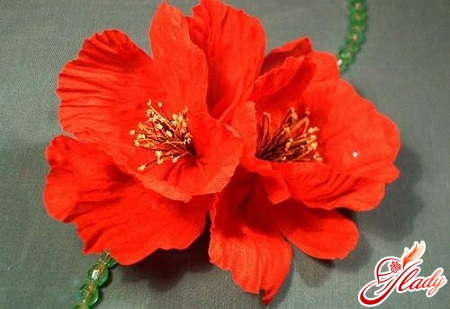
Cloth for artificial flowers
If you seriously want to learn how to create bouquets of fabric, you should know that not every cut is suitable for such handmade work.
- This needlework provides for the use of exclusively monochrome fabric.
- Do not discard the trimmings that remainyou after sewing. Sometimes the finest patches make the most beautiful artificial flowers, since it is easier to work with scraps than with a large cut of fabric.
- For realistic bouquets in full size, suitable fabrics such as chintz, satin, coarse calico, satin, silk, cambric, crepe de Chine.
- If you plan to make a boutonniere for clothes, then you will need such types of fabrics as silk, velvet, velvet, panbarhat, brocade, satin, silver or gold brocade, leather and husky.
- Artificial flowers look good, with the creation of which several types of fabrics were used. So experiment!
What other secrets are hidden in the flower handicraft? Actually, there are a lot of them. And to master all the subtleties for one reading of the article is simply impossible. But if you will experience a burning desire to create a beautiful bouquet and feel the fabric, then you will succeed!
We prepare a pattern
In creating artificial flowers everything is just likewhen sewing a skirt or a dress. The process begins with an idea, and ends with a pattern. Why exactly ends? Yes, because if you cut out the details incorrectly, no flower will come out, and your good endeavor will perish at the root. In order for this to happen, you need to remember a few secrets:
Preparing the Parts
Do not rush to sew the cut out details. Before starting work, they must be washed, ironed and, if necessary, colored. By the way, if you are going to sew a flower from small details (for example, chrysanthemum), then you should not paint details, but cut before cutting. It happens that the tone you received does not meet your expectations. For example, the dye was too intense, or, conversely, too weak. It is not worth it to rediscover the details because of this. It is enough to wash off the dye from the fabric with a hot solution of sodium hydrogen sulfate (5 grams of substance per liter of boiling water) and repaint again. Some flowers have been endowed with beautiful contrasting edging of petals. To repeat this is not so difficult. Just do not dive the petals in the dye, trying to get to the very edge. The border is drawn with a felt-tip pen. 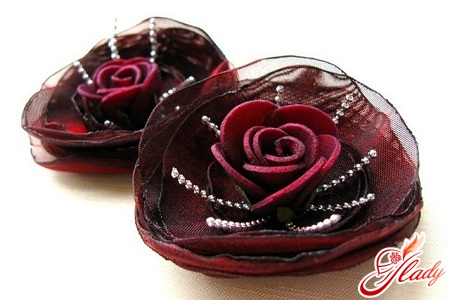
Stiffening
Many in perplexity re-read the first halfarticles in search of the words "gelatin" and "starch." After all, these two substances give the details the necessary rigidity. All right. Only to starch the future flower we will be after the last drop of paint has dried. Every woman knows the proportion of starch dilution. We are sure that you have used grandmother's tricks more than once to make the skirt stiffer. With flowers everything is the same as with clothes. Only here you have to consider that the thinner the fabric, the greater the concentration of starch (or gelatin) is required. If you make velvet flowers, then note that on the front side of the fabric, no starch should fall. A mixture of gelatin is applied only from the inside of the velvet cut with a cotton swab.
Basic principles of creating a buttonhole
Before you create a buttonhole for a loved one, master for yourself several rules for creating them:
Connecting parts
Before mastering the flower craft, youprobably armed with a mass of books with colorful pictures. It is right. In such visual aids, each assembly stage is not only described in detail, but also photographed. But if you collected a bouquet and it is radically different from the picture that decorated the handicraft allowance, do not get discouraged. Remember the saying, in which the gods do not burn pots. And in no case do not throw attempts to create artificial flowers with your own hands. Did not work the first time? Try again. We advise you to read:




